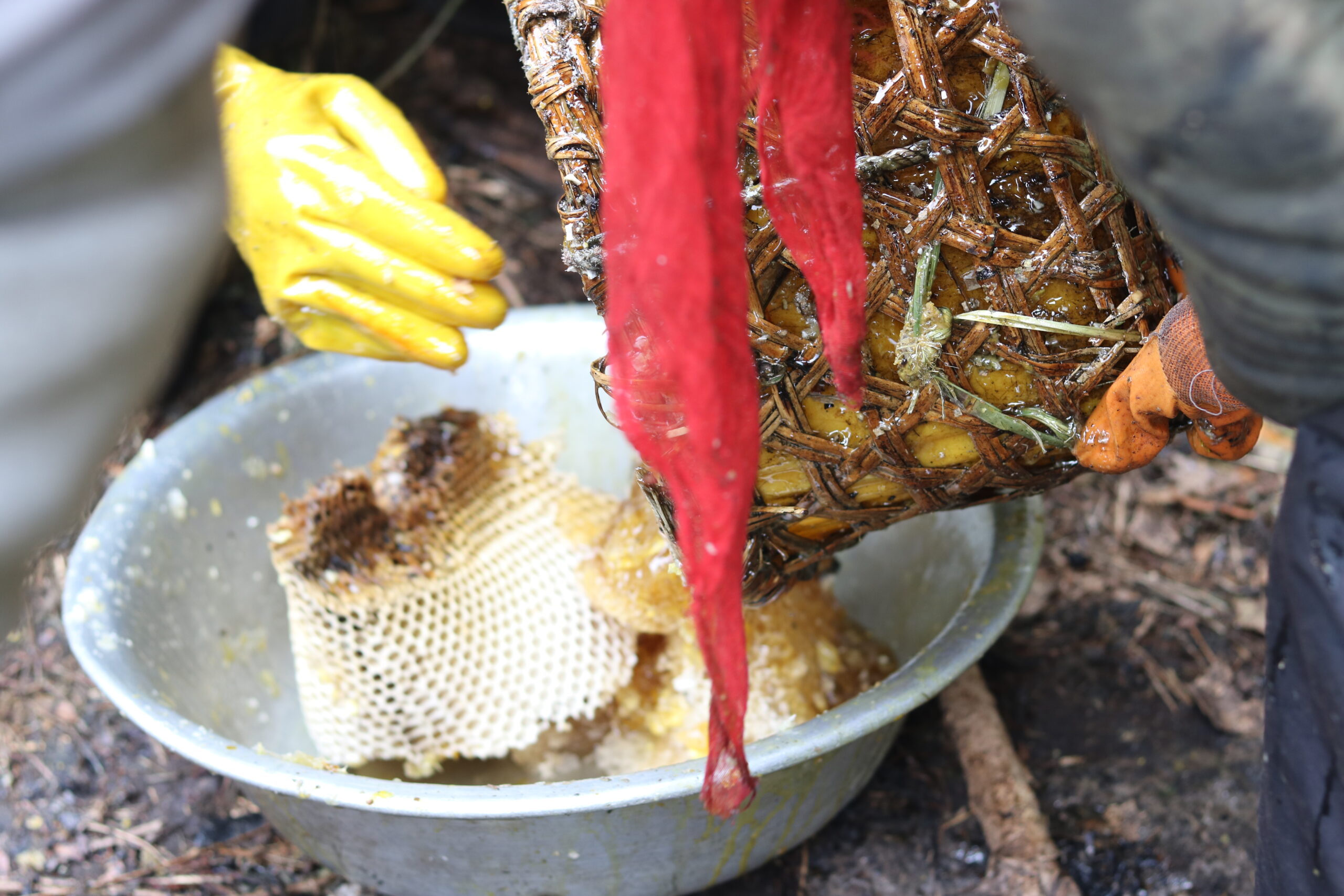Free Worldwide Shipping | Limited Reserve | New Arrival of 2025 Spring

Mad honey is a type of honey that is produced by bees that feed on the nectar of the Rhododendron flower. It possesses a mildly bitter flavor and a reddish color. This honey contains grayanotoxins, which can cause dizziness and nausea when ingested in large amounts.
Bees create mad honey by collecting nectar from specific rhododendron flowers, particularly those containing grayanotoxins, such as Rhododendron ponticum and Rhododendron luteum.
The presence of grayanotoxins in the nectar gives mad honey its distinctive psychoactive properties, causing effects like dizziness when consumed in significant amounts. This unique characteristic sets this honey apart from regular honey.

Mad honey is a type of honey produced by bees that feed on the nectar of the Rhododendron flower. It contains grayanotoxins, which can cause dizziness and nausea when ingested in large amounts.
Mad honey has been traditionally used for its potential health benefits, which include boosting the immune system, treating digestive problems, improving sexual performance, relieving coughs and sore throats, and supporting heart health.
There is no standardized dosage for mad honey, and the amount that is safe to consume can vary depending on the individual and the potency of the honey. However, it is generally recommended to consume no more than 1-2 teaspoons of mad honey at a time.
The legality of mad honey can vary depending on the country and region. In some places, it may be legal to purchase and consume for medicinal or culinary purposes, while in others it may be illegal. For detail ed information, click Is Mad Honey Legal?
Mad honey is primarily produced in certain regions of Turkey and Nepal, but it can also be found in other parts of the world.
The active ingredient in mad honey is grayanotoxin, which is a type of neurotoxin.
There is limited research on the health benefits of mad honey, and more studies are needed to establish its efficacy and safety.
Mad honey is traditionally consumed in small amounts, either by mixing it with water or other foods, or by eating it directly.
Mad honey has a distinct flavor that is described as bitter and slightly spicy, with a lingering aftertaste.
Nepalese mad honey is renowned for its hallucinogenic and medicinal properties, but it also comes with potential side effects. In small doses, it can cause mild effects such as dizziness, lightheadedness, and a sense of euphoria. However, when consumed in larger quantities, the risks increase significantly. Higher doses may lead to hallucinations, vomiting, severe drops in blood pressure, loss of consciousness, seizures, and, in extreme cases, death. It’s important to approach mad honey with caution due to its potent effects and potential dangers.
The effects of mad honey can take anywhere from a few minutes to several hours to appear, depending on the dose and individual sensitivity.
It is not recommended for children to consume mad honey due to the potential risks and lack of established safe doses.
It is not recommended for pregnant or breastfeeding women to consume mad honey due to the potential risks and lack of established safe doses.
Mad honey's high cost is primarily due to its rarity and labor-intensive harvesting process. Found in remote Himalayan regions, it is produced by bees that feed on specific rhododendron flowers, which contain grayanotoxins responsible for the honey’s unique properties. The challenging terrain and limited flowering seasons make it difficult to gather, leading to a restricted supply. As demand grows, particularly for its medicinal and hallucinogenic effects, the scarcity drives the price even higher, making it a sought-after and costly product.
Mad honey is made from the nectar of Rhododendron species and other plants in the Ericaceae family. These plants produce grayanotoxins, which are toxic compounds that give mad honey its distinctive intoxicating effects. When bees collect nectar and pollen from these plants, the resulting honey contains these grayanotoxins, making it different from regular honey. This honey is known for its reddish color and its ability to induce dizziness, euphoria, and hallucinations when consumed in varying quantities.
To identify genuine mad honey, look for these key indicators:
These characteristics can help determine if the mad honey you have is genuine.
Yes, mad honey is considered rare, especially the varieties harvested from high altitudes above 2500 meters. In these remote Himalayan regions, few bees can thrive, making the collection process labor-intensive and difficult. The limited production, often yielding as few as 200 jars per year, adds to its scarcity. Additionally, the specific flowering plants that produce the grayanotoxins essential for mad honey are only found in certain areas, further contributing to its rarity and high value.
Mad honey gets its name from its powerful, mind-altering effects. Derived from the nectar of Rhododendron flowers, which contain grayanotoxins, this honey can cause symptoms ranging from dizziness and hallucinations to paralysis, and in rare cases, death. Historically, it has even been used in warfare as a form of "honeytrap" to incapacitate enemies, earning it the moniker "mad honey" due to its intense, often unpredictable physiological and mental effects.
We source our honey from the Himalayan cliffs, situated above 2500m, and deliver it without a single additive. We harvest it twice a year: in Autumn, from October to November, and in Spring, from April to May. During the honey hunting process, our honey hunters encounter numerous challenges, make a steep vertical climb and faces sting of enormous Himalayan Giant bee. They must navigate the perilous task of fixing ropes in the cliffs to collect the mad honey. Despite the difficulties and dangers involved, we remain steadfast in our commitment to deliver the finest quality Mad Honey, free from any additives.
Furthermore, we, a group of vibrant and youthful individuals, collaborate closely with the honey hunters of Nepal, actively supporting them in safeguarding this time-honored tradition. Our goal is to foster small-scale enterprises in Nepalese villages, empowering the local youth to thrive within their own communities. Every purchase you make directly contributes to the welfare of the indigenous honey hunter community.
100% RAW AND WILD MAD HONEY